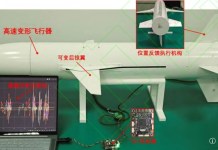A combination of a US-made engine, Israeli radar and electronic warfare equipment, and Indian technology is set to make the HAL Tejas a formidable fighter jet.
Developed by the state-owned Hindustan Aeronautics Limited (HAL), Tejas is a single-engine, fourth-generation, multirole light combat aircraft (LCA). Given its capabilities, experts see Tejas as the future aircraft for the Indian Air Force.
It has been designed by the Aeronautical Development Agency (ADA) in collaboration with HAL’s Aircraft Research and Design Centre (ARDC) for the primary use of the Air Force and the Navy under the LCA program.
The development of the HAL Tejas fighter is considered a flagship project under Prime Minister Narendra Modi’s ‘Make in India’ initiative.
The initiative puts a major focus on the country’s ambition to become self-reliant in the field of defense manufacturing, and the Tejas fighter jet project by the Bengaluru-headquartered HAL is a shining example of it.
As per government estimates, the LCA Tejas fighter is 60 percent Indian by value with the figure expected to go up in the coming years as India takes steps to cut foreign dependence on its parts.
The fighter jet program has used an interesting combination of Indian tech, American engines, and Israeli radar and electronic warfare (EW) systems.
It wasn’t India’s original plan to acquire the American engine as it had already eyed the acquisition of home-grown Kaveri jet engines.
Developed by the Defence Research and Development Organisation (DRDO), the Kaveri was a low bypass twin-spool turbofan jet engine slated to provide an 80 KN power pack and adequate ‘thrust to weight’ ratio for the Tejas.
However, it was deemed insufficient for the requirements of the Tejas, and a decision was taken to procure General Electric’s GE F404 engine.
At a time when neighbors Pakistan and China have faced troubles in receiving advanced components from other nations, India on the other hand found itself spoiled for choices.
After the failure of the Kaveri engine, India had reportedly received orders of assistance from Russia, France, the US, and the UK. Finally, India chose to pick the US-made GE F404 engine.
The American engine will provide that much-needed stability and reliability to the Tejas fighter jet at a time when China’s most advanced fifth-generation J-20 fighter has been plagued with engine problems.
Produced by GE Aviation, the General Electric F404 is a family of afterburning turbofan engines falling in the 10,500–19,000 lbf (47–85 kN) class (static thrust).
The engine provides a maximum thrust of 11,000 lbf (48.9 kN) and a thrust of 17,700 lbf (78.7 kN) with an afterburner. The overall pressure ratio of the engine stays at 26:1, the Bypass ratio is 0.34:1, with the Thrust-to-weight ratio being 4.8 (dry), 7.8 (afterburning).
As per General Electric, the F404 is one of the most versatile engines in its class, making it a compelling option for applications around the world.

The engine was also praised by former Indian Air Force chief Birender Singh Dhanoa, saying that the American-made engines had excellent fuel efficiency and that he had rarely seen that among the contemporary fighter jets that he had flown during his career.
Like in the case of the engine, countries such as France, Israel, and Sweden had shown interest to supply the radar and EW equipment for the Tejas.
India chose to procure ELM-2052 active electronically scanned array (AESA) radars and ELL-8222WB electronic warfare (EW) suites from Elta Systems, a subsidiary of the Israel Aerospace Industries (IAI).
The EL/M-2052 advanced Airborne Fire Control Radar (FCR) has been designed for air superiority and advanced strike missions.
It is based on fully solid-state active phased array technology, which enables the radar to achieve a longer detection range, high mission reliability, and a multi-target tracking capability of up to 64 targets.
On the other hand, the ELL-8222SB airborne Electronic Warfare (EW) self-protection jammer has been based on cutting-edge Active Phased Array technology which allows high sensitivity target detection and transmission of accurate and narrowly focused high power directional beams.
It creates the most effective target jamming available currently, making the fighter stand supreme in aerial combat.
Follow EurAsian Times on Google News




